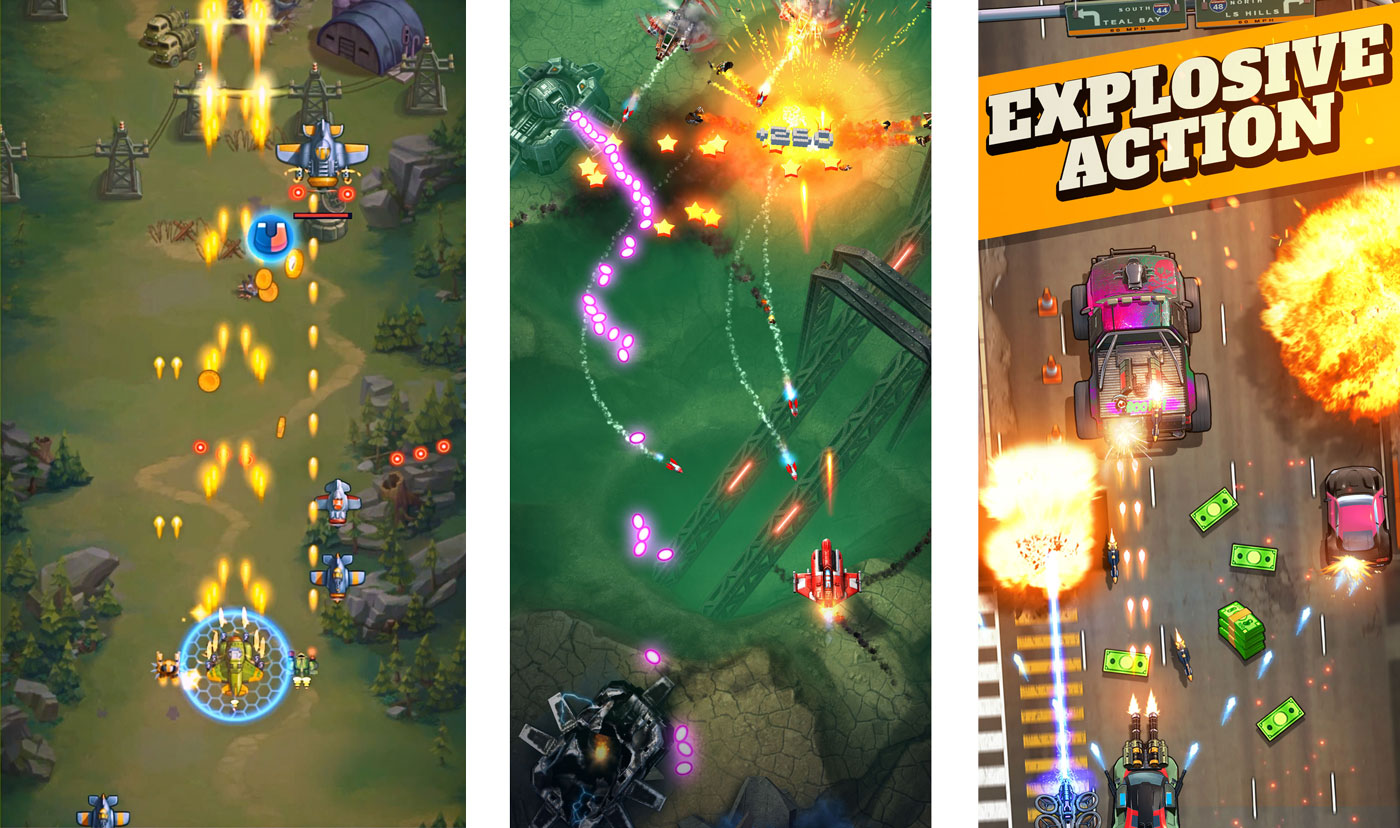How the authors of HAWK improved the retention of the game by 5 points
Sometimes the growth opportunities of business metrics are embedded in non-obvious things. IT Territory managed to achieve an increase in the retention of the first day thanks to the introduction of “deep UX” into the development.
The term deep UX is introduced by Alexander Enin, director of the studio. He formulates it as “a set of measures aimed at working not only with such familiar things as informativeness, predictability and convenience, but also with more complex ones — with emotional involvement and retention.”
Enin cites the work with deep UX as an example of the history of the development of HAWK, a cooperative mobile top-down shooter about airplanes, which was released last year.

HAWK
The project has shown steady cash growth since its launch.
Back in July last year, the project’s revenue reached $500,000 per month, according to DataMagic. Now, according to the developers, the amount is already much more. The game was also well received by the audience. However, as it turned out, not all of them.
One of the interviewed employees told Enin that HAWK is a boring game. He also noted that he preferred a competitive project, which, as it turned out, is less profitable than the IT Territory game.
This feedback led Alexander to the idea that, despite the high performance, there may be something wrong with the project. To find out exactly what the problem is, he tested HAWK and its competitors (Sky Force Reloaded and Fastlane: Road to Revenge).

HAWK, Sky Force Reloaded and Fastlane: Road to Revenge
As part of the testing, users “were asked to play each of the three games in a different order for 15 minutes.
After each game, respondents filled out the Game Experience Questionnaire, Microsoft Desirability Toolkit and discussed their impressions of the game with the moderator.”
The results showed that players really perceive HAWK worse than competitors whose box office figures are much lower (for example, the average monthly earnings of Sky Force Reloaded fluctuates around the $50 thousand mark).
Interviewed users often noted that the game is old—fashioned and boring. They also used words such as “exciting”, “interesting” and “fun” when describing other games.

The survey also showed the number of negative and positive impressions about the products. The number of positive impressions HAWK also genenril less than Sky Force and Fastlane.

However, the number of negative reactions turned out to be the smallest. This allowed Enin to conclude that the public’s attitude to the project is restrained and positive. Although the game does not cause enthusiasm, it does not upset the users much.
The game showed itself best in terms of immersion. In other words, the players highly appreciated her ability to draw and hold attention. At the same time, they lacked motivation and tension in the gameplay.

Thanks to testing, Enin saw that the game was objectively inferior to competitors in a number of points. These moments became for him the points of possible growth of an already completed project.
The problem was solved based on the main advantage of the project — its ability to retain and monetize players for a long time. The retention of the first day at that time for the game was 41%, and LTV was based on a period of 6 months.
“We decided to focus on the experience that allowed us to retain players for so long and hyperbolize it at the very start of the game,” says Alexander.
It was about a complete reworking of the initial stage of the game. Developers:
- the training level was removed and replaced with training in the first battle;
- minimized interaction with non-combat interfaces during the first session by redoing the narrative;
- changed the work with skills (now the player had to actively use them from the very beginning);
- visually improved the launch aircraft and its firing dynamics;
- the first levels were redone.
All the changes were made in parallel with the main work, so they took three months. After the new version of the game was assembled, the developers conducted repeated comparative testing. According to its results, the updated HAWK turned out to be the leader in emotional engagement. All respondents noted the attractiveness and dynamism of the game.
Also, as a result of the changes, the retention of the game has also increased. The retention of the first day, for example, increased by 12% (from 41% to 46%), as well as the retention of the third day (from 24% to 27%).

The central conclusion that Enin formulated can be reduced to the fact that today “deep UX” is becoming more and more important. It involves working with the emotions and impressions of the players, with what is unique for each game that cannot be copied. Today, when analysis tools and well—established installation practices are available to developers, when creating games is a fast and transparent process, the ability to build on the user experience in your particular game is a valuable competitive advantage.
Also on the topic:
